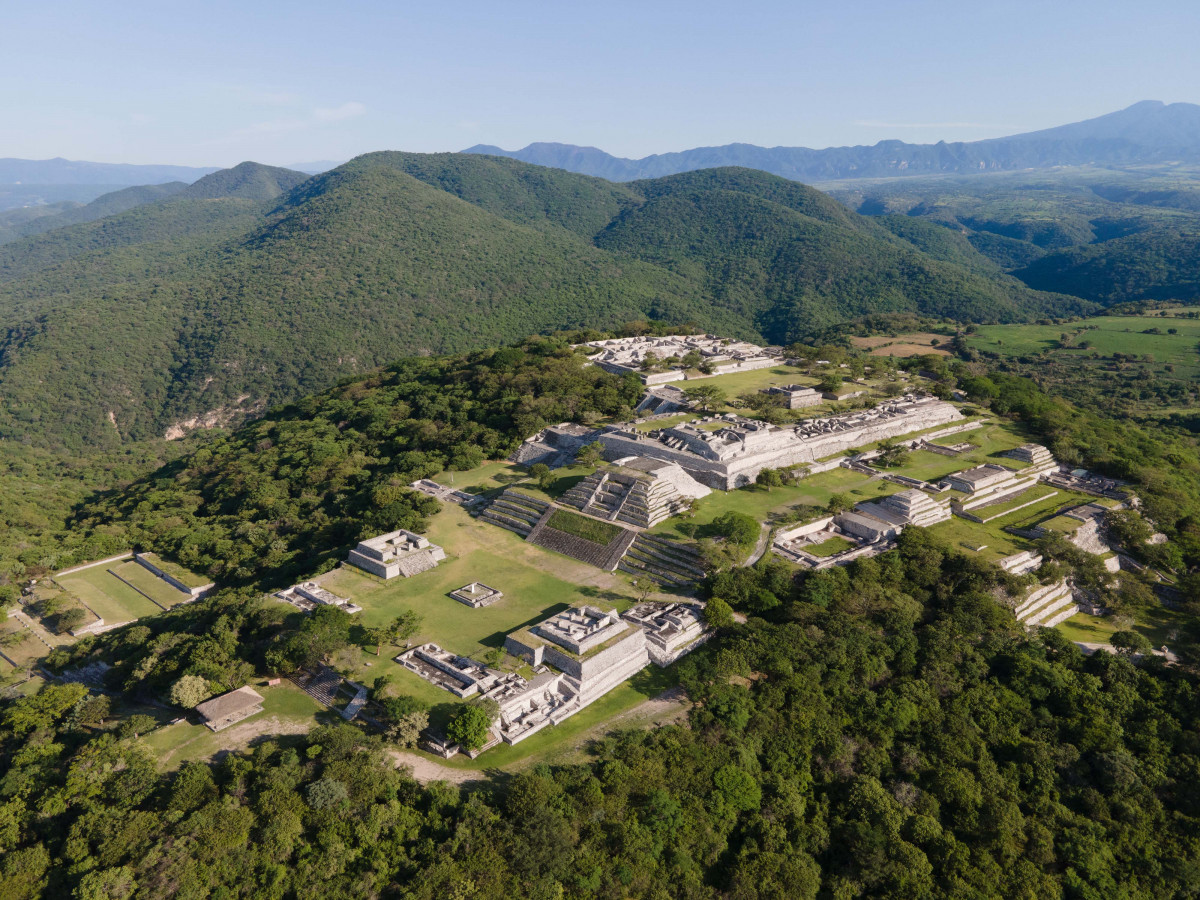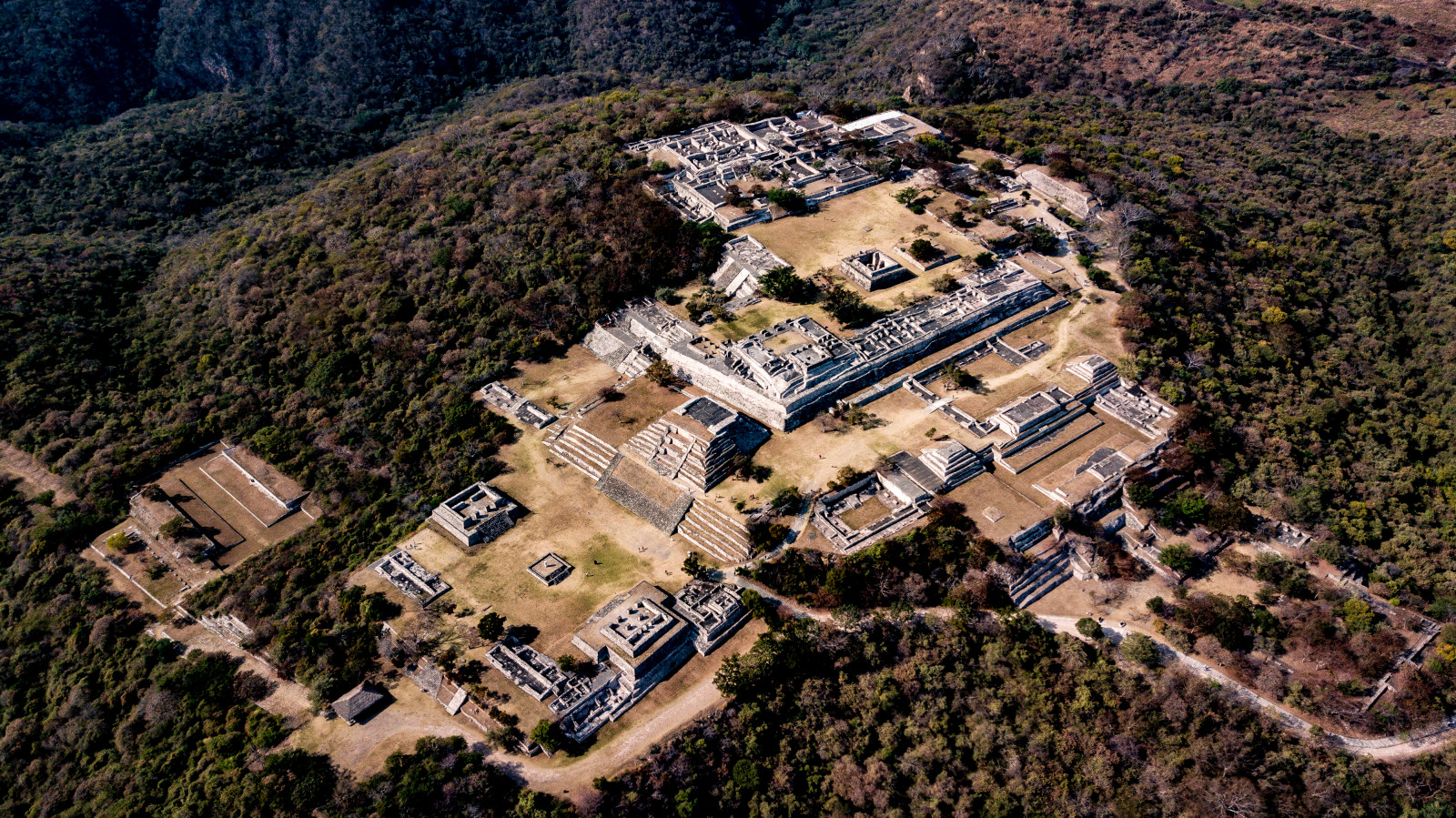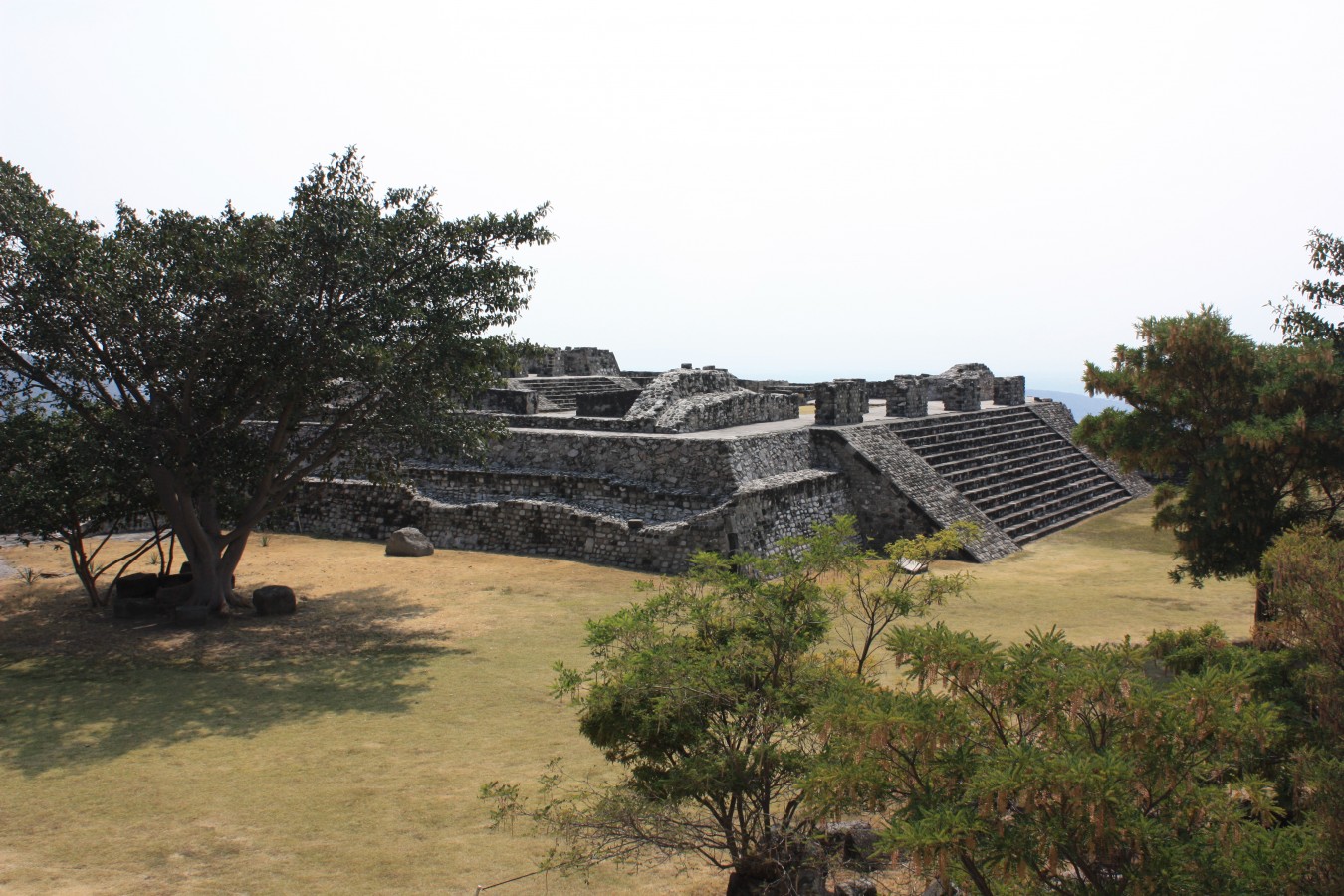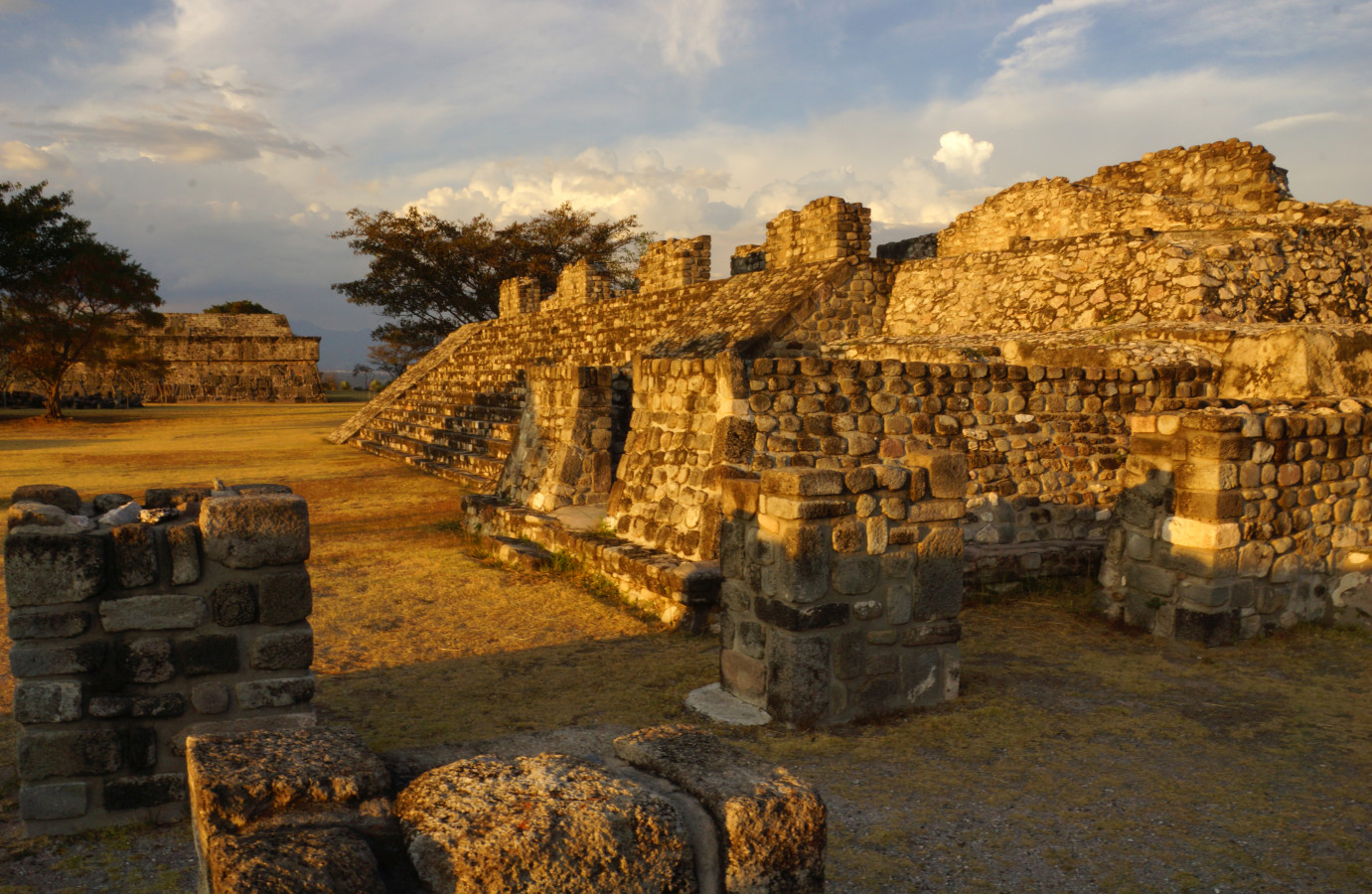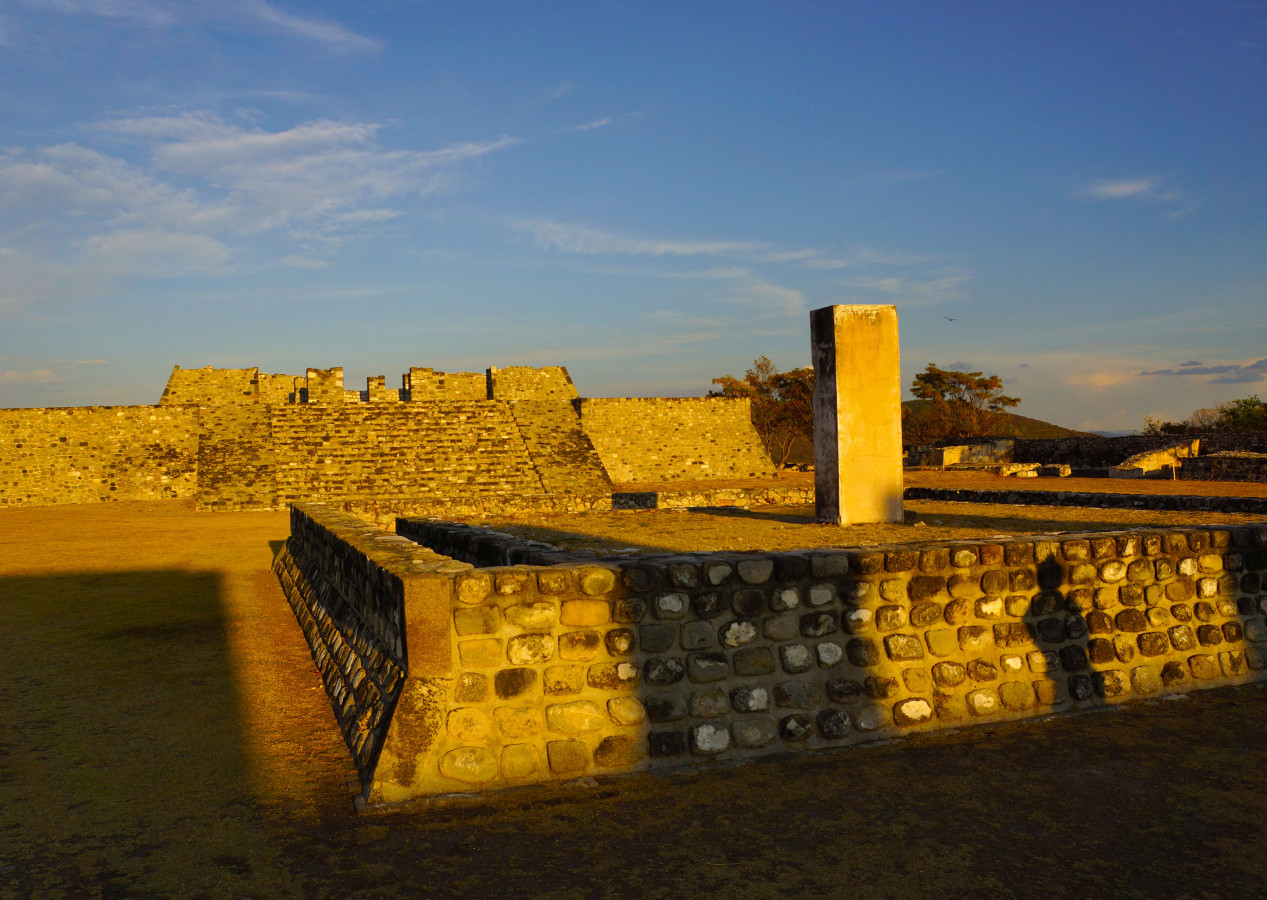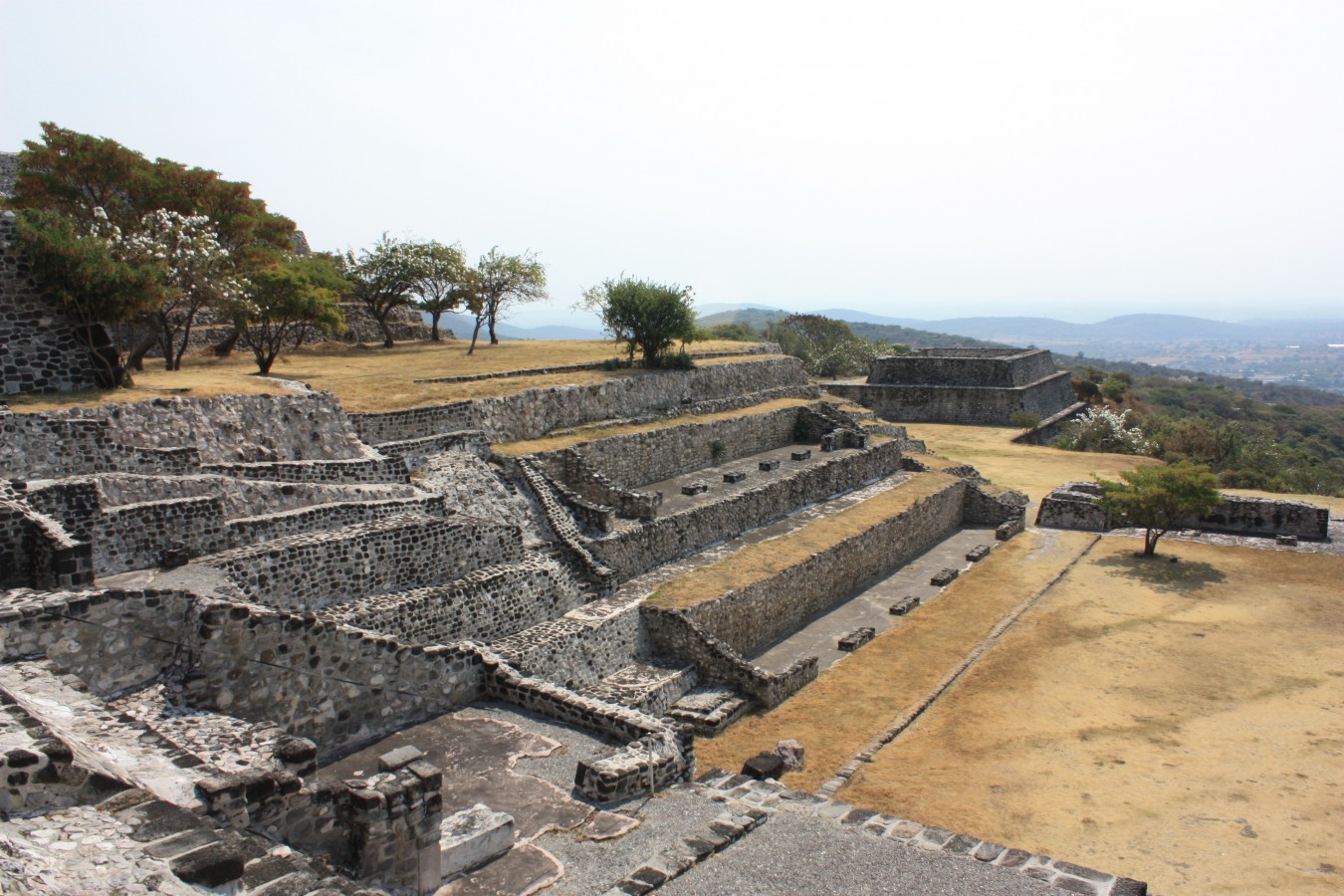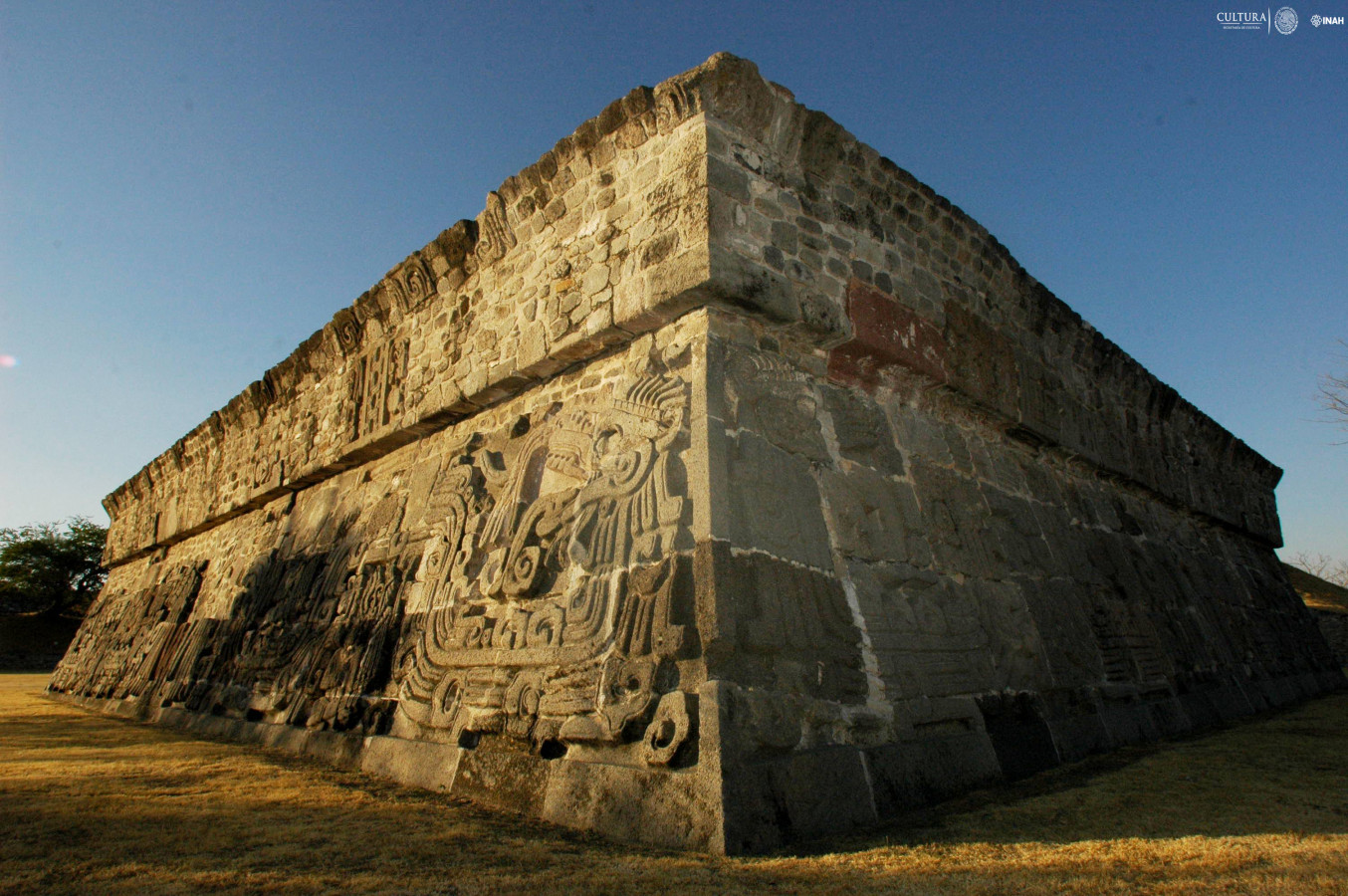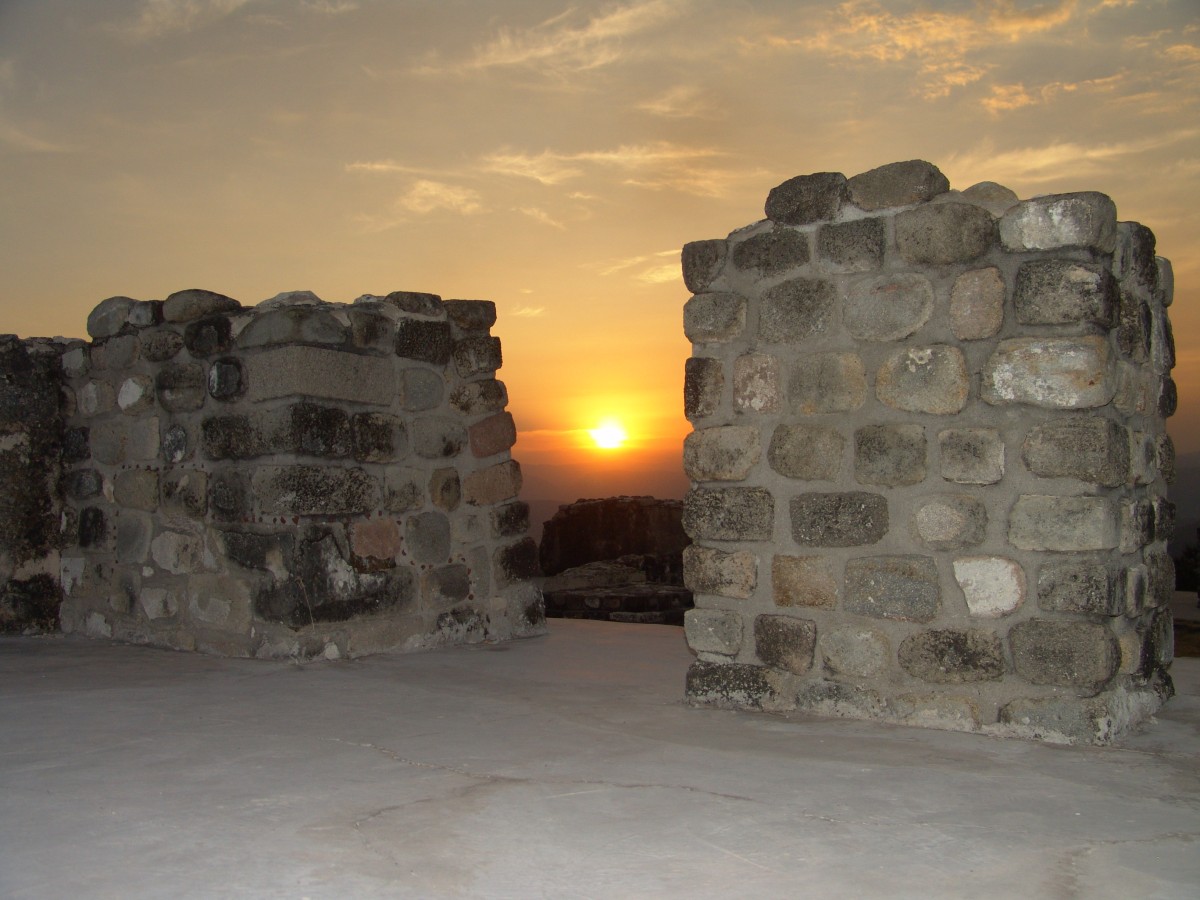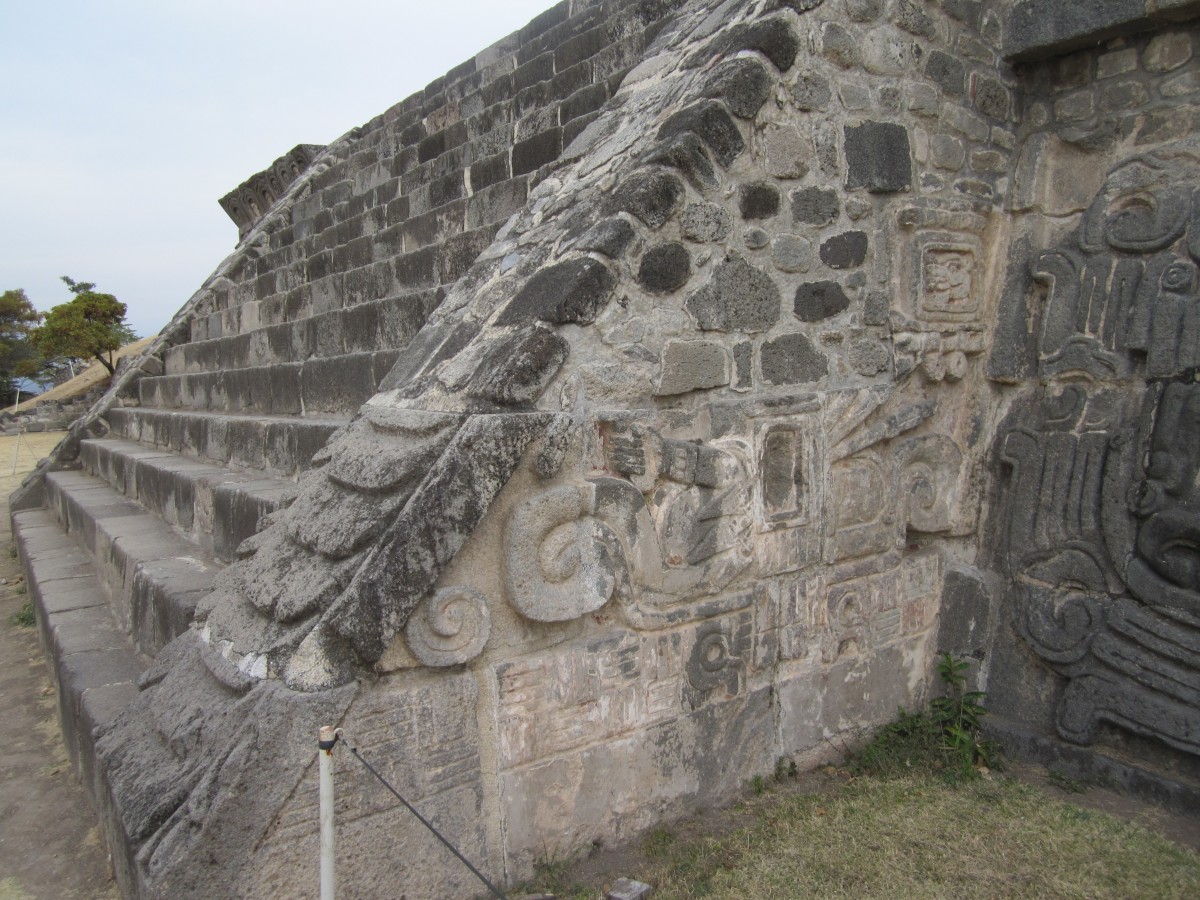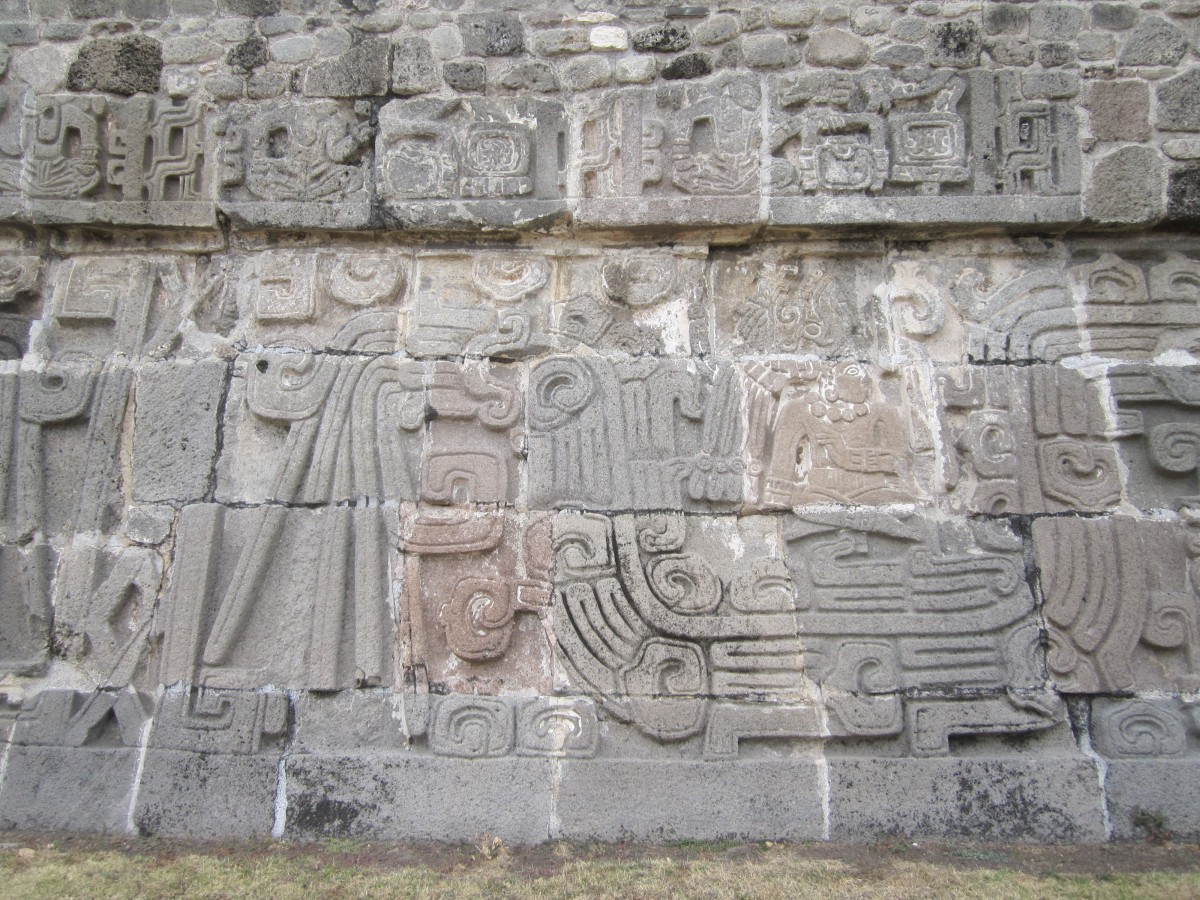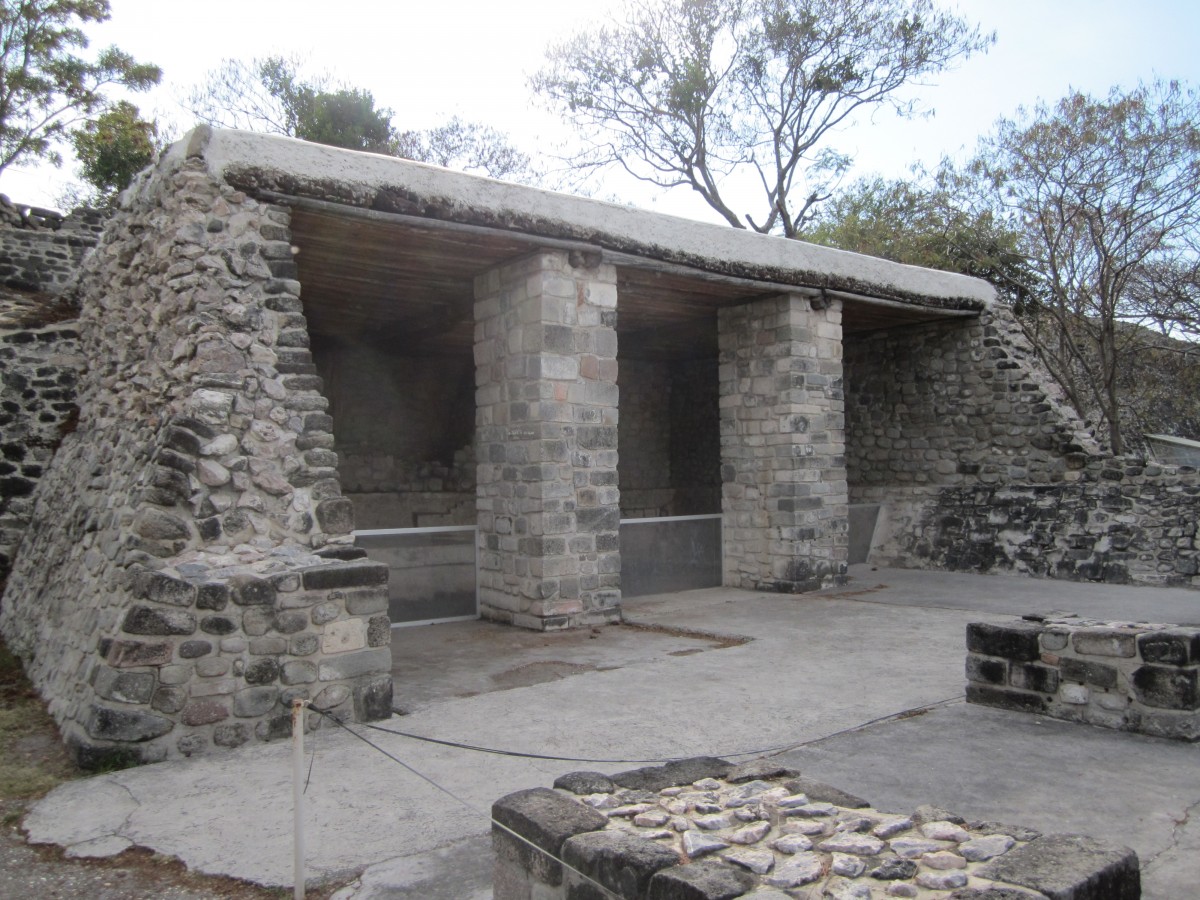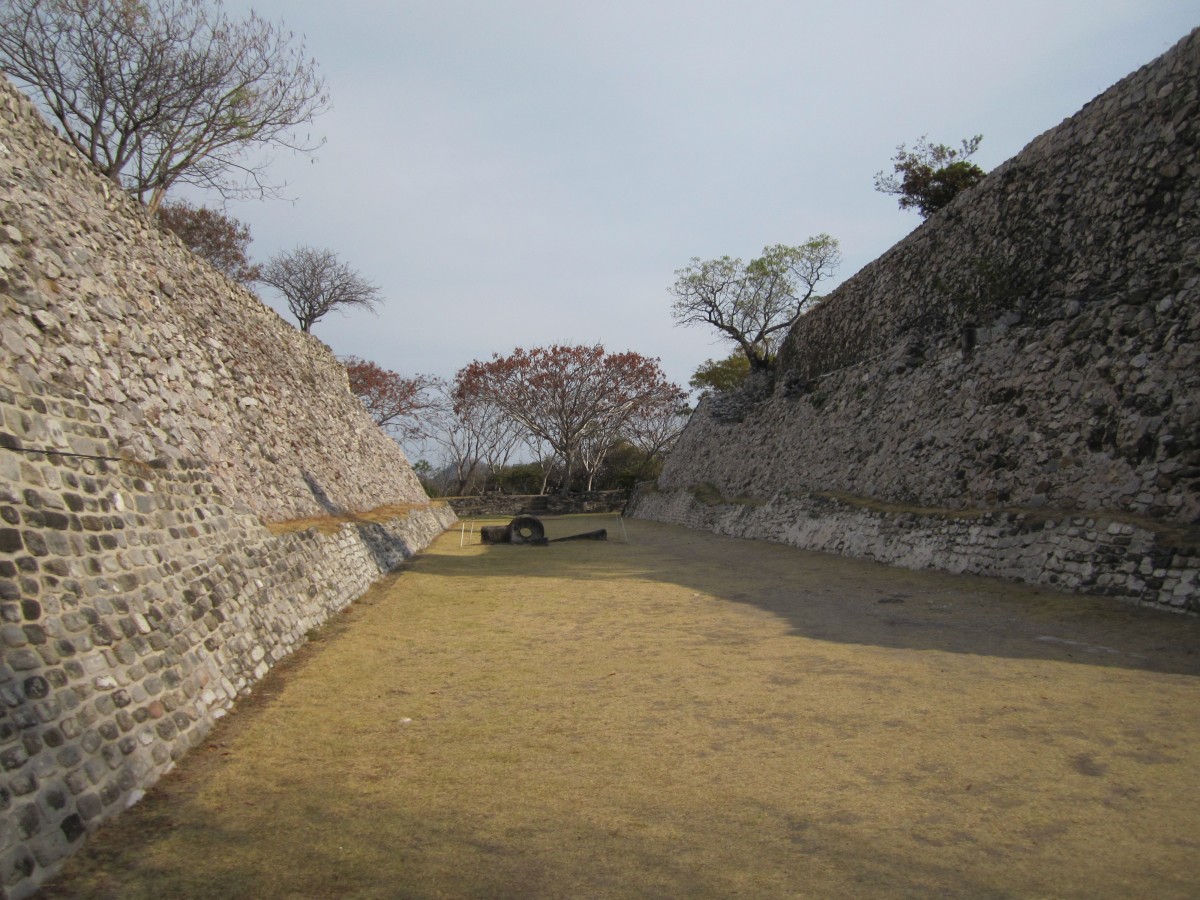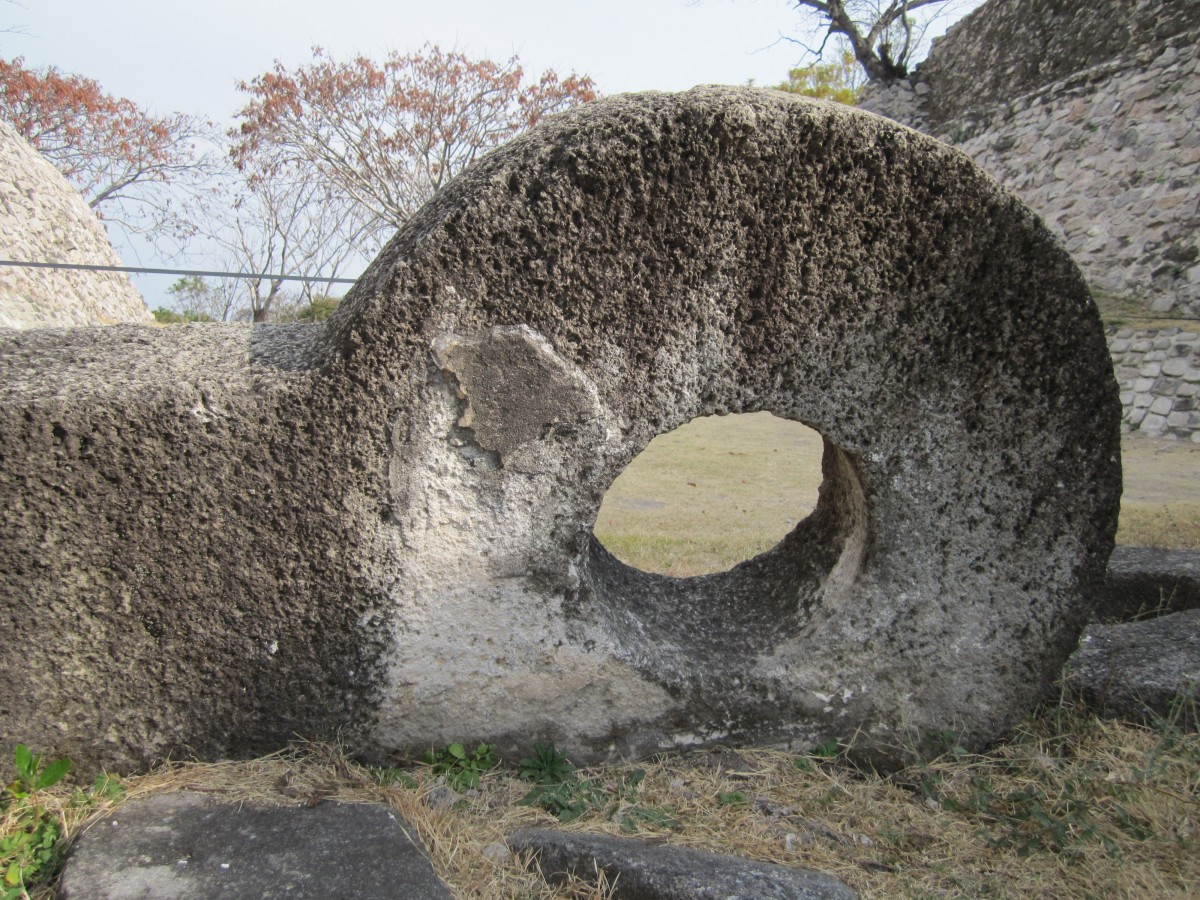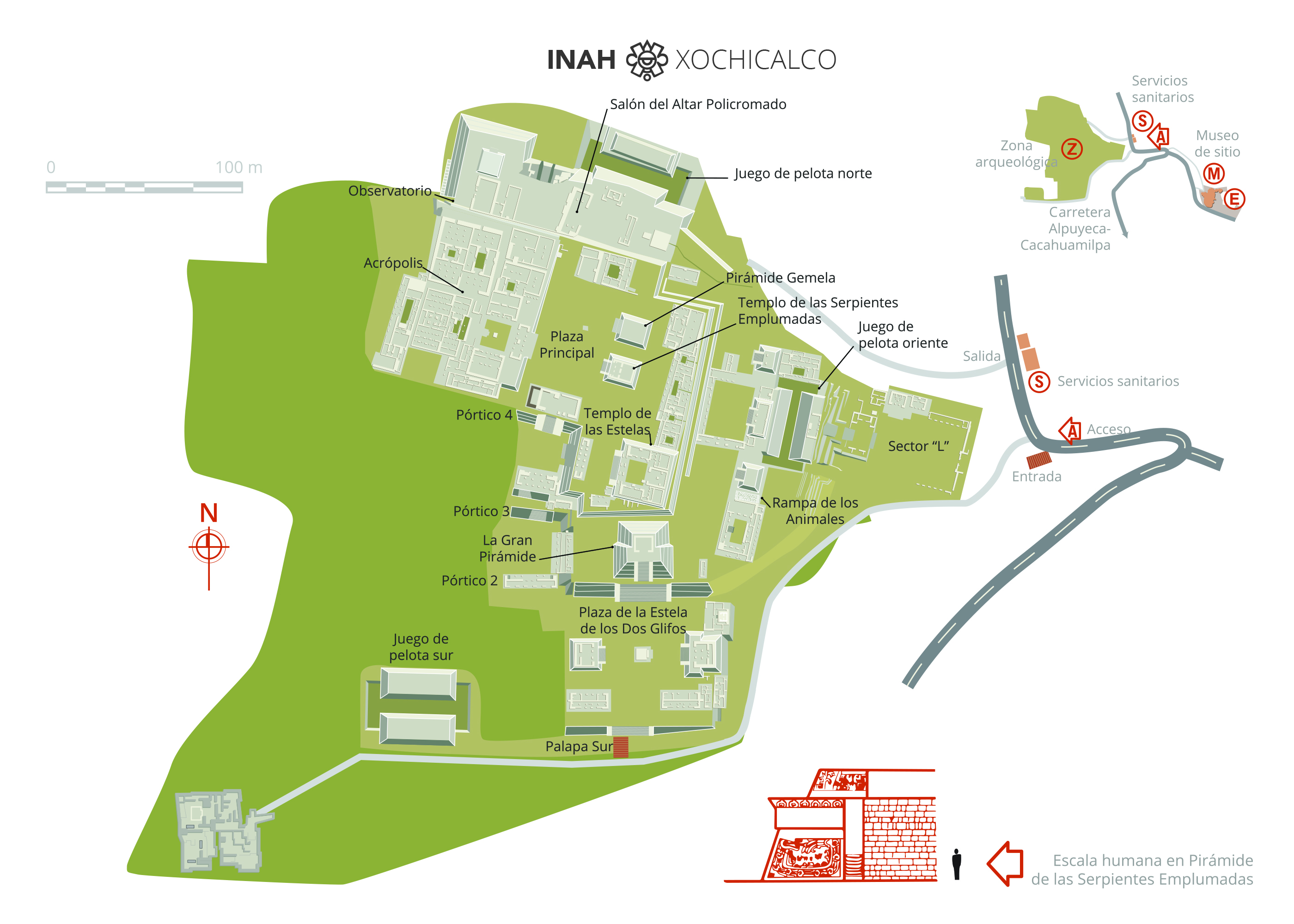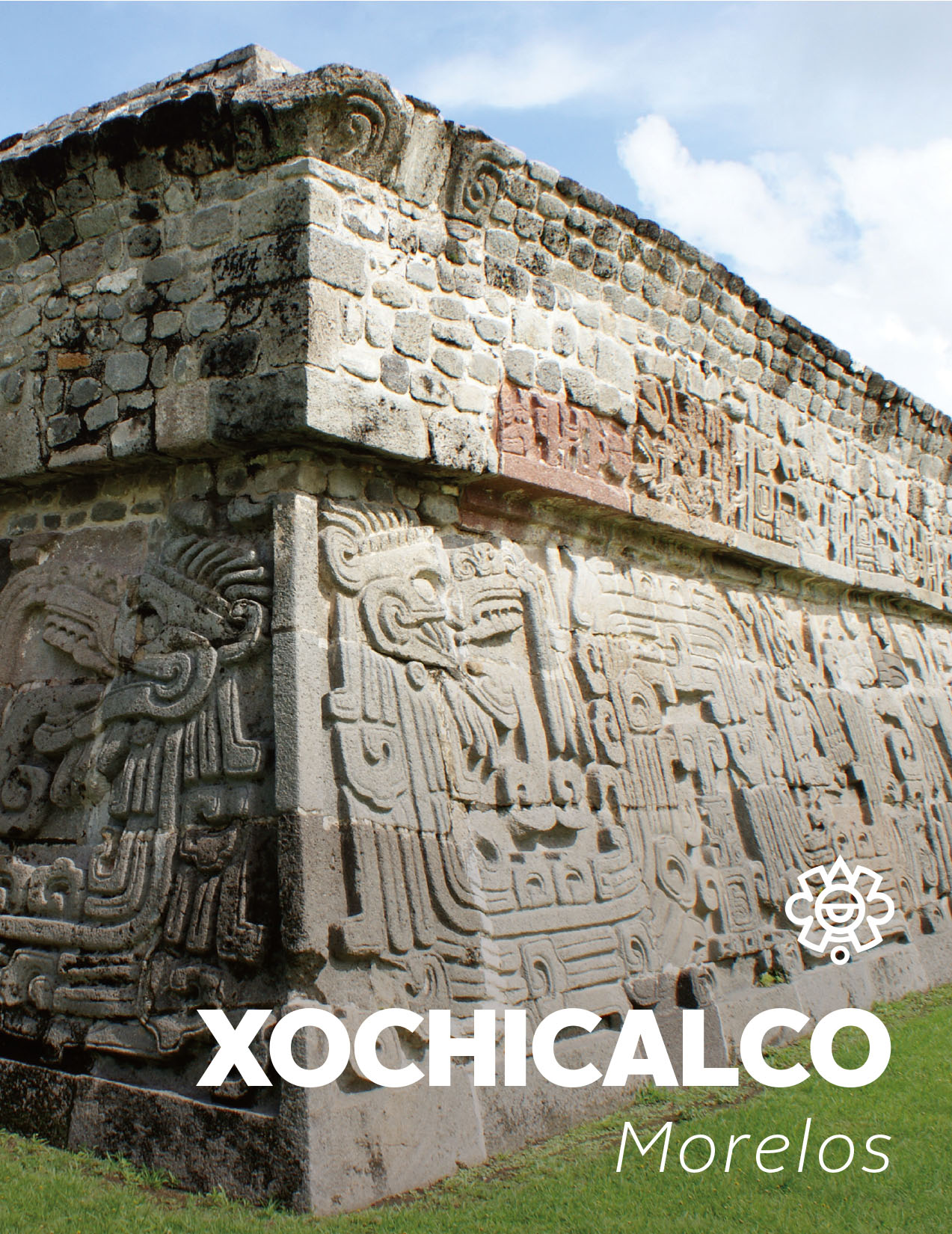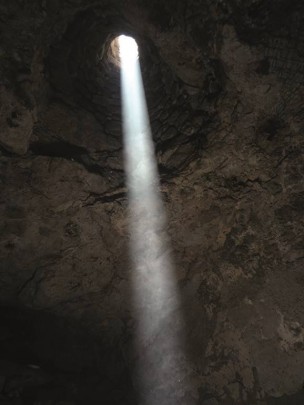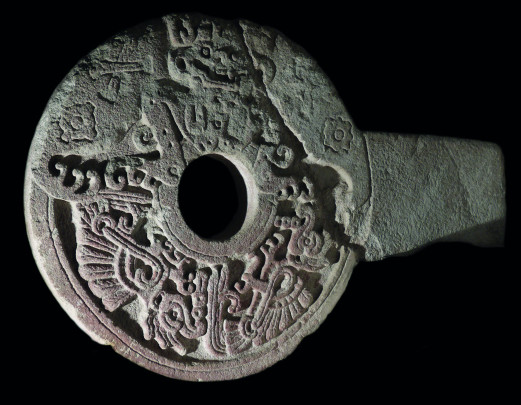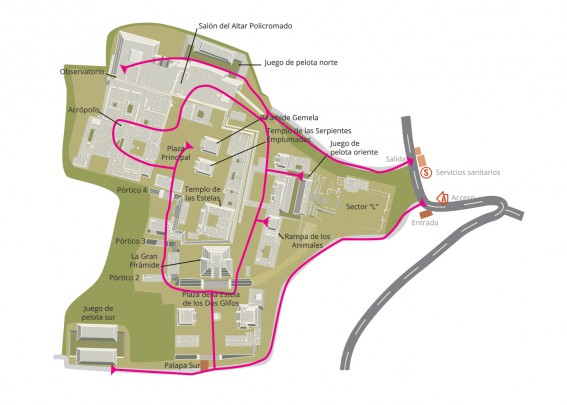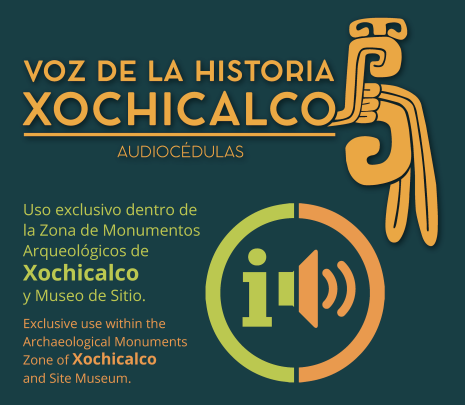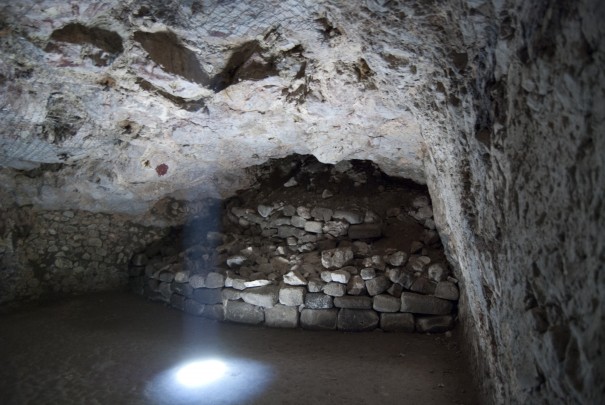Xochicalco
In the place of the flower house
An indigenous city built on the top of the Xochicalco hill possibly for visual dominance of the landscape. The ancient settlers built walls, moats and large access roads for absolute control of their entrances.
Their knowledge in engineering, environment, astronomy, construction, and aesthetics is distinguished in each of the platforms, temples, palace and residential houses that can still be admired at the site. Showing the heritage values that made it a site inscribed on the World Heritage List as a cultural asset and recognized by the original inhabitants that are still preserved nearby as The House of the Flowering Knowledge.
Their knowledge in engineering, environment, astronomy, construction, and aesthetics is distinguished in each of the platforms, temples, palace and residential houses that can still be admired at the site. Showing the heritage values that made it a site inscribed on the World Heritage List as a cultural asset and recognized by the original inhabitants that are still preserved nearby as The House of the Flowering Knowledge.
About the site
“In the place of the house of flowers.” This was the name given to Xochicalco by the Nahuatl-speaking settlers who discovered the impressive pre-Hispanic city from the Epiclassic period after it had already been abandoned. Its name is perhaps due to the repeated and extraordinary depictions of flowers left as evidence by those who constructed the city, or to the large variety of flowers of different forms and colors that flourish here practically year-round. Despite this speculation, the archeological data leads us to believe instead that Xochicalco should be known as Totolhuacalco (“the place where birds are caught” in Nahuatl), as repeated evidence has been found of a glyph showing a bird in what is apparently a cage.
Xochicalco was first mentioned by Fray Bernardino de Sahagún in the sixteenth century, and many people have had reason to investigate it, giving rise to multiple analyses in different fields of knowledge. The site continues to raise questions, despite the remarkable number of studies over the last 100 years.
The Mesoamerican Epiclassic period (650-900) came immediately after the fall of Teotihuacan, so it is reasonable to assume that the emigrants from that major city founded several Epiclassic cities. This stage was characterized by pre-Hispanic settlements in hard-to-access places, in some cases taking advantage of the irregularities of the terrain and in others by artificially altering the landscape to restrict or hinder entrance. This is the case for Xochicalco in Morelos, Monte Albán in Oaxaca, Teotenango in the State of Mexico, Cacaxtla in Tlaxcala, El Tajín in Veracruz, Cholula and Cantona in Puebla and Paquimé in Chihuahua. It is believed that this characteristic responds to the social conditions of that time, such as constant disputes to dominate territories and trade routes, and finally to the internal revolts that ended cities, as deduced by the evidence of fires, defaced sculptures and sudden abandonment of such hegemonic places as Xochicalco.
It is worth emphasizing the engineering skills that enabled the people of Xochicalco to plan, construct and subsequently abandon, over a period of just 250 years, a settlement in such a restricted location. They availed of the three-lobed shape of Cerro Xochicalco and worked on artificially leveling the terrain until they had five levels of terraces from which to manage the entire city. Also of note were their advanced system for capturing and releasing rainwater, residential structures at least two stories high in the Acropolis, and the three Mesoamerican ballgame courts which have so far been discovered, each with different characteristics.
Moreover, the magnificent artistic work of Xochicalco's artisans at its height can not only be appreciated in the Temple of the Feathered Serpents, the Stela of the Two Glyphs, the three stelae found in the Temple of the Stelae and the ring from the East Ballcourt, but also in the pieces now on permanent display at the Site Museum, such as the sculptures of the Puma with Bow, The Red Man and the Starfish, as well as various stone and ceramic sculptures that also reveal ample knowledge of the region’s flora and fauna. All these objects were surely of great value, owing to the complications of forging trade routes between Xochicalco, on the Central Mexican Plateau, and places as far away as Oaxaca, the Gulf of Mexico coast and the Yucatán peninsula.
According to the most widely accepted theory, the petroglyph motifs in the Temple of Feathered Serpents bear witness to a meeting held in Xochicalco with people from the Maya area and the Gulf and Oaxaca coasts, apparently to implement a correction to the calendar regarding a total eclipse of the sun occurring in the years in which Xochicalco was at the height of its splendor.
The UNESCO placed Xochicalco on the World Heritage List in 1999. Among its reasons for doing so were the astronomical importance of the Xochicalco Observatory, one of the four most studied in Mesoamerica together with that of Monte Albán and two at Teotihuacan; its impressive examples of visual art; evidence of advanced knowledge about engineering and the extensive biodiversity that has been present in this place and its surroundings since pre-Hispanic times. This entails a responsibility to preserve the place for the benefit of future generations.
The Xochicalco Site Museum is also worthy of mention. Inspired by the high level of development achieved by the people of Xochicalco, it was the first museum in Mexico to operate with sustainable technology. After almost 20 years in operation, it continues to renew Xochicalco’s commitment to the environment.
Xochicalco was first mentioned by Fray Bernardino de Sahagún in the sixteenth century, and many people have had reason to investigate it, giving rise to multiple analyses in different fields of knowledge. The site continues to raise questions, despite the remarkable number of studies over the last 100 years.
The Mesoamerican Epiclassic period (650-900) came immediately after the fall of Teotihuacan, so it is reasonable to assume that the emigrants from that major city founded several Epiclassic cities. This stage was characterized by pre-Hispanic settlements in hard-to-access places, in some cases taking advantage of the irregularities of the terrain and in others by artificially altering the landscape to restrict or hinder entrance. This is the case for Xochicalco in Morelos, Monte Albán in Oaxaca, Teotenango in the State of Mexico, Cacaxtla in Tlaxcala, El Tajín in Veracruz, Cholula and Cantona in Puebla and Paquimé in Chihuahua. It is believed that this characteristic responds to the social conditions of that time, such as constant disputes to dominate territories and trade routes, and finally to the internal revolts that ended cities, as deduced by the evidence of fires, defaced sculptures and sudden abandonment of such hegemonic places as Xochicalco.
It is worth emphasizing the engineering skills that enabled the people of Xochicalco to plan, construct and subsequently abandon, over a period of just 250 years, a settlement in such a restricted location. They availed of the three-lobed shape of Cerro Xochicalco and worked on artificially leveling the terrain until they had five levels of terraces from which to manage the entire city. Also of note were their advanced system for capturing and releasing rainwater, residential structures at least two stories high in the Acropolis, and the three Mesoamerican ballgame courts which have so far been discovered, each with different characteristics.
Moreover, the magnificent artistic work of Xochicalco's artisans at its height can not only be appreciated in the Temple of the Feathered Serpents, the Stela of the Two Glyphs, the three stelae found in the Temple of the Stelae and the ring from the East Ballcourt, but also in the pieces now on permanent display at the Site Museum, such as the sculptures of the Puma with Bow, The Red Man and the Starfish, as well as various stone and ceramic sculptures that also reveal ample knowledge of the region’s flora and fauna. All these objects were surely of great value, owing to the complications of forging trade routes between Xochicalco, on the Central Mexican Plateau, and places as far away as Oaxaca, the Gulf of Mexico coast and the Yucatán peninsula.
According to the most widely accepted theory, the petroglyph motifs in the Temple of Feathered Serpents bear witness to a meeting held in Xochicalco with people from the Maya area and the Gulf and Oaxaca coasts, apparently to implement a correction to the calendar regarding a total eclipse of the sun occurring in the years in which Xochicalco was at the height of its splendor.
The UNESCO placed Xochicalco on the World Heritage List in 1999. Among its reasons for doing so were the astronomical importance of the Xochicalco Observatory, one of the four most studied in Mesoamerica together with that of Monte Albán and two at Teotihuacan; its impressive examples of visual art; evidence of advanced knowledge about engineering and the extensive biodiversity that has been present in this place and its surroundings since pre-Hispanic times. This entails a responsibility to preserve the place for the benefit of future generations.
The Xochicalco Site Museum is also worthy of mention. Inspired by the high level of development achieved by the people of Xochicalco, it was the first museum in Mexico to operate with sustainable technology. After almost 20 years in operation, it continues to renew Xochicalco’s commitment to the environment.
Map
Did you know...
- The reliefs of feathered serpents on the temple of the same name suggest influences from the Maya styles of Oaxaca and Veracruz.
- 3 ball courts have been discovered in the site (North, East and South), which leads researchers to assume that a ball court must have existed in the western area of the city, according to Mesoamerican worldview in which four ball courts were conceived as cardinal points joined by a central point that was where the cities were built, however no evidence of its existence has been found.
- The Xochicalco Site Museum has a large introductory and temporary exhibits gallery which offers panoramic views of part of the pre-Hispanic city.
An expert point of view
Xochicalco reminds us that everybody wins when we put the common good before our individual differences.
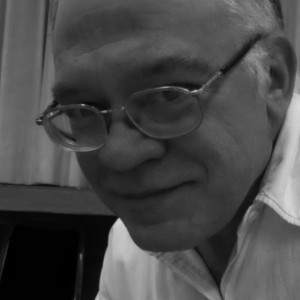
Manuel Gándara Vázquez
Escuela Nacional de Conservación, Restauración y Museografía
Practical information
Monday to Sunday from 09:00 to 18:00 hrs. Last entry 17:00 hrs.
$100.00 pesos. Includes admission to the on-site museum.
A 38 kilómetros de la ciudad de Cuernavaca, entre los municipios de Temixco y Miacatlán.
Desde la Ciudad de México, tomar la Carretera Federal 95 hacia Cuernavaca, o bien la carretera de cuota y una vez ahí, seguir hacia Acapulco hasta llegar a Alpuyeca, de ahí tomar hacia Miacatlán y a 8 km en el poblado de Xochicalco tomar hacia la derecha hacia la Carretera Federal Xochicalco-Tetlama hasta recorrer 4 km más para llegar a la Zona Arqueológica.
Free entry to national visitors:
- Children under 13 years old.
- People over 60 years old.
- Teachers and students with a valid ID.
- Pensioners and retirees with ID.
- People disabled.
- Tourist guides accredited by the Federal Tourism Ministry.
- People belonging to indigenous communities adjacent to the site with valid ID proving their address.
On Sundays, admission is free for the entire national public and for foreigners residing in Mexico.
Video recording fee
Prohibited items: Pets, unmanned aerial vehicles, packages or backpacks, tripods, weapons, food or alcoholic beverages, helmets and cigarettes.
- Children under 13 years old.
- People over 60 years old.
- Teachers and students with a valid ID.
- Pensioners and retirees with ID.
- People disabled.
- Tourist guides accredited by the Federal Tourism Ministry.
- People belonging to indigenous communities adjacent to the site with valid ID proving their address.
On Sundays, admission is free for the entire national public and for foreigners residing in Mexico.
Video recording fee
Prohibited items: Pets, unmanned aerial vehicles, packages or backpacks, tripods, weapons, food or alcoholic beverages, helmets and cigarettes.
-
+52 (737) 374 30 91; +52 (737) 374 30 92
-
This email address is being protected from spambots. You need JavaScript enabled to view it.
-
VISITA VIRTUAL
-
FACEBOOK
-
TWITTER
Directory
Director de la Zona de Monumentos Arqueológicos y Museo de Sitio
Jose A. Cuauhtli Medina Romero
This email address is being protected from spambots. You need JavaScript enabled to view it.
+52 (737) 374 3090

